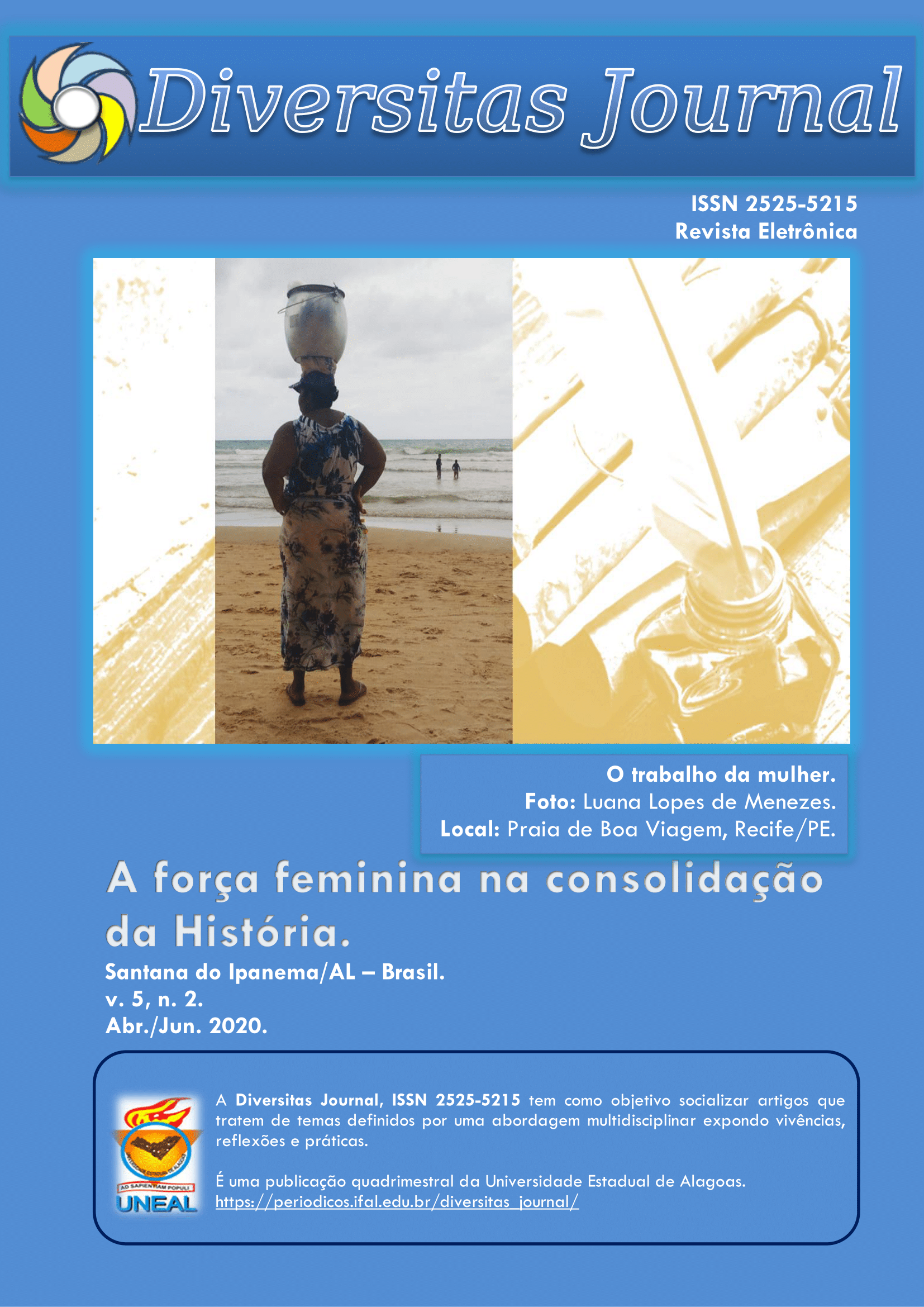Dormência tegumentar de sementes de baobá: Escarificação química
DOI:
https://doi.org/10.17648/diversitas-journal-v5i2-1111Abstract
ABSTRACT: The baobab is a tree of multipurpose and biological properties; being its roots, tubers, twigs, fruits, seeds, leaves and edible flowers and used as common ingredients in traditional dishes in Africa. The objective of this study was to evaluate the chemical scarification with sulfuric acid and caustic soda to overcome the integumentary dormancy in baobab seeds. The design was completely randomized in a 2 x 4 + 1 factorial scheme (chemical scarification: sulfuric acid (H2SO4) and caustic soda (NaOH) x immersion times: 2; 4; 6 and 8 hours + untreated seeds (control)). The efficacy of the treatments was evaluated by the emergence, speed index and mean time of emergence, stem diameter, length and dry mass of shoot and root system of normal seedlings. The results showed that the chemical scarification with caustic soda and sulfuric acid for the periods of 2; 4; 6 and 8 hours caused the tegument rupture of the seeds, which contributed to increase the emergence of baobab seedlings, however, the emergence of seedlings of the seeds scarified with caustic soda for 2 hours did not differ from the values of the seedlings from the untreated seeds. Caustic soda and sulfuric acid were efficient in overcoming the integumentary dormancy of baobab seeds, however, caustic soda is more indicated because it is easy to acquire and low cost.
KEYWORDS: Adansonia digitata, sulfuric acid, caustic soda, seedling development.
Metrics
Downloads
Published
How to Cite
Issue
Section
License
Copyright (c) 2020 Ariana Veras de Araújo, Monalisa Alves Diniz da Silva, André Pereira Freire Ferraz, Ana Carla Vieira de Brito

This work is licensed under a Creative Commons Attribution 4.0 International License.
The Diversitas Journal expresses that the articles are the sole responsibility of the Authors, who are familiar with Brazilian and international legislation.
Articles are peer-reviewed and care should be taken to warn of the possible incidence of plagiarism. However, plagiarism is an indisputable action by the authors.
The violation of copyright is a crime, provided for in article 184 of the Brazilian Penal Code: “Art. 184 Violating copyright and related rights: Penalty - detention, from 3 (three) months to 1 (one) year, or fine. § 1 If the violation consists of total or partial reproduction, for the purpose of direct or indirect profit, by any means or process, of intellectual work, interpretation, performance or phonogram, without the express authorization of the author, the performer, the producer , as the case may be, or whoever represents them: Penalty - imprisonment, from 2 (two) to 4 (four) years, and a fine. ”


















